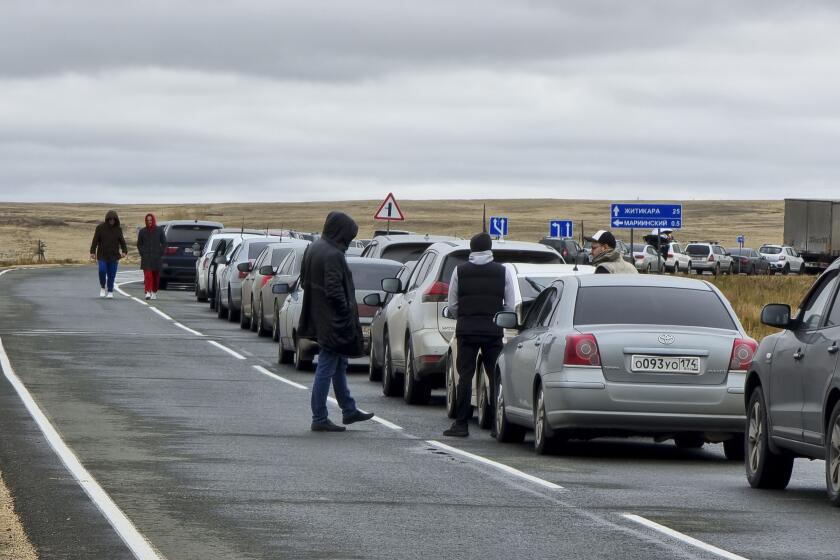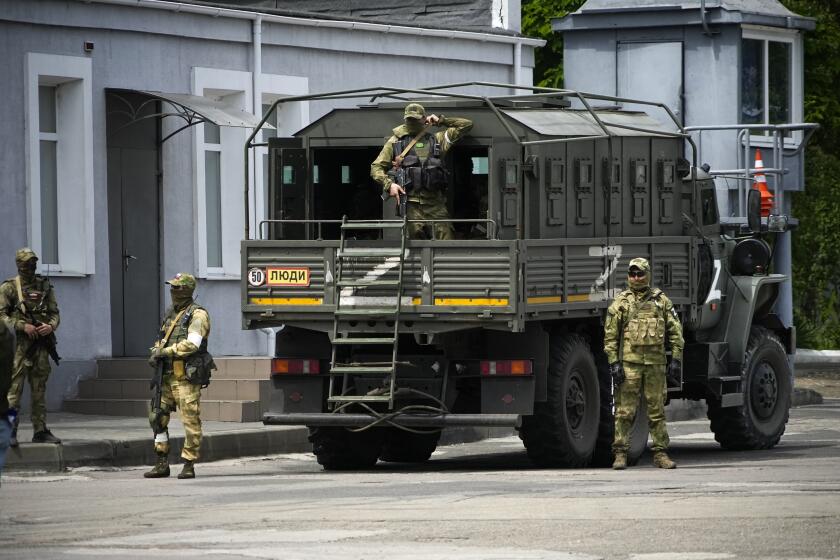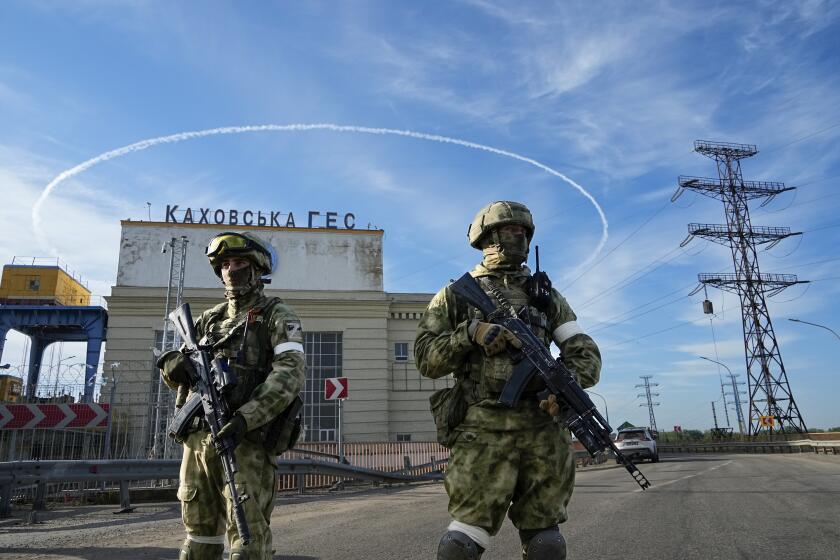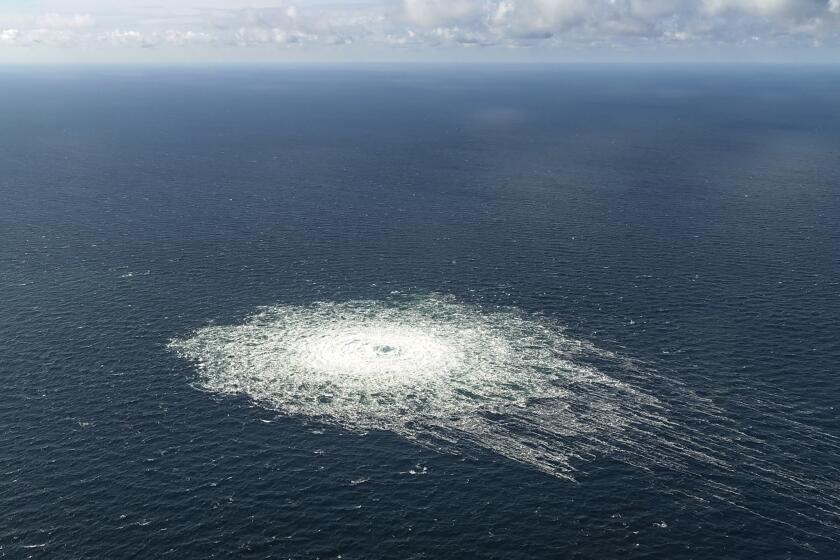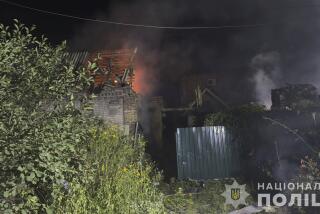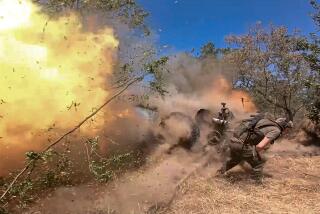Ukrainian troops claim new gains in southern counteroffensive
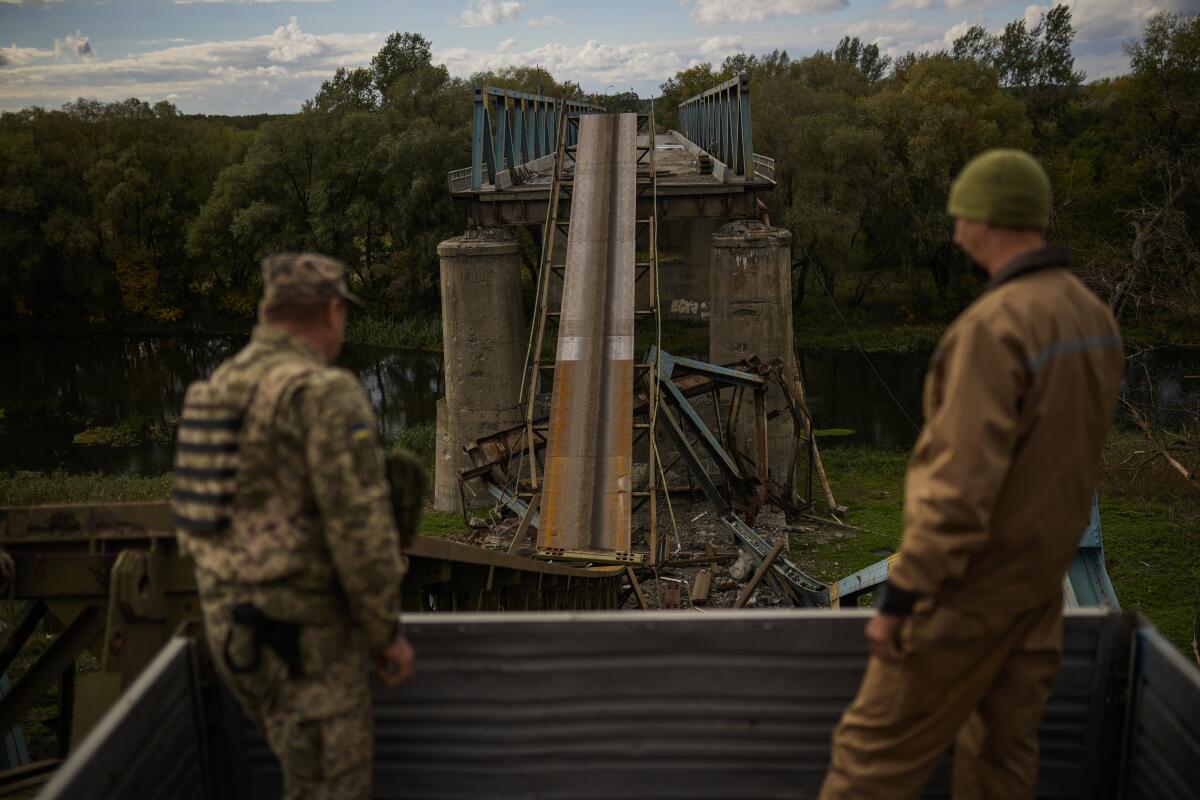
KYIV, Ukraine — Ukrainian forces scored more gains in their counteroffensive across at least two fronts Monday, advancing in the very areas Russia is trying to absorb and challenging its effort to engage fresh troops and its threats to defend incorporated areas by all means, including with nuclear weapons.
In their latest breakthrough, Ukrainian forces penetrated Moscow’s defenses in the strategic southern Kherson region, one of the four areas in Ukraine that Russia is trying to grab and desperately defend.
Kyiv’s troops also consolidated gains in the east and other major battlefields, reestablishing Ukrainian control just as Russian President Vladimir Putin is trying to overcome problems with manpower, weapons, troop morale and logistics, along with intensifying domestic and international criticism. He faces confusion and disarray domestically about his partial troop mobilization and establishment of new Russian borders.
Ukraine’s advances have become so apparent that even Russia’s Defense Ministry spokesman Igor Konashenkov, who usually focuses on his own military’s successes and the enemy’s losses, was forced to acknowledge it.
“With numerically superior tank units in the direction of Zolota Balka and Oleksandrivka, the enemy managed to forge deep into our defenses,” Konashenkov said Monday, referring to two Kherson region towns. He coupled that with claims that Russian forces inflicted heavy losses on Ukraine’s military.
Ukrainian forces have struggled to retake the Kherson region, in contrast to its successful breakout offensive in the northeast around the country’s second-largest city of Kharkiv that began last month.
Ukraine has pressed its counteroffensive in the Kherson region since the summer, relentlessly pummeling Russian supply lines and making inroads into Russian-held areas west of the Dnieper River. The Ukrainian military has used U.S.-supplied HIMARS multiple rocket launchers to repeatedly hit the main bridge across the Dnieper and a dam that served as a second main crossing. It also has struck pontoon bridges that Russia has used to supply its troops.
Officials say more than 194,000 Russians have crossed into neighboring countries since Putin announced a partial mobilization of reservists to fight in Ukraine.
As the front lines shifted, the political theater in Moscow continued. Russia’s lower house of parliament Monday quickly rubber-stamped annexation treaties for Kherson, Zaporizhzhia, Donetsk and Luhansk to join Russia. The upper house will follow suit Tuesday as a culmination of annexation “referendums” the Kremlin orchestrated last week — actions the U.N. chief and Western nations have said are illegal.
Russia’s moves to incorporate the Ukrainian regions, as well as Putin’s effort to mobilize more troops, have been done so hastily that government officials have struggled to explain and implement them. Putin admitted last week that some of the men called up had been mistakenly selected and ordered them sent home. On Monday, the issue was even more basic: Exactly what areas of Ukraine is Russia trying to incorporate?
Residents who have left the occupied Black Sea port city of Kherson tell of heavy-handed efforts by Russia to establish permanent control.
Kremlin spokesman Dmitry Peskov said Donetsk and Luhansk are joining Russia with their administrative borders that existed before a conflict erupted there in 2014 between pro-Russia separatists and Ukrainian forces. He noted that the borders of the two other regions — Zaporizhzhia and Kherson — are undecided.
“We will continue to discuss that with residents of those regions,” Peskov said in a conference call with reporters. He did not provide additional details.
A senior Russian lawmaker offered a different view. Pavel Krasheninnikov said Zaporizhzhia will be absorbed within its “administrative borders,” meaning Moscow will incorporate parts of the region still under Kyiv’s control. He said similar logic will apply to Kherson, but that Russia will include two districts of the neighboring Mykolaiv region that Moscow holds.
Russia’s Vladimir Putin is threatening to use nuclear weapons in his war on Ukraine. The U.S. response need not be nuclear in return.
Putin’s land grab has threatened to push the conflict to a dangerous new level, with he and his top officials warning of the potential use of nuclear weapons and ordering the partial troop mobilization. It also prompted Ukraine to apply for fast-track NATO membership.
In addition to the Kherson region areas that Russia’s Defense Ministry cited, various sources showed Ukrainian flags, soldiers deployed or other signs that Kyiv’s forces had retaken the villages of Arkhanhelske, Myroliubivka, Khreshchenivka, Mykhalivka and Novovorontsovka. Ukrainian officials often don’t confirm territorial gains until they are certain they’re sustainable.
The situation in the regional capital, also called Kherson, was so precarious that Russian authorities are restricting people from leaving, Ukraine’s presidential office said.
Still, Russia claimed some success at pushing back. The Moscow-appointed Kherson regional head, Vladimir Saldo, said Ukrainian troops tried to advance toward Dudchany along the Dnieper’s western bank, seeking to reach a key dam at Nova Kakhovka, but that Russian warplanes destroyed two Ukrainian battalions and halted the offensive. Saldo added that Russian forces fended off Ukraine’s attempted inroads into the Kherson region from Mykolaiv and Kryvyi Rih.
Stealth operations and assistance from Ukrainian guerrilla forces pose a growing challenge to Russia’s grip on occupied areas in southeastern Ukraine.
A Russian-installed official in the Kherson region, Kirill Stremousov, said in a video statement Monday morning that Ukrainian forces “have broken through a little deeper.” However, he insisted that “everything is under control” and that Russia’s “defense system is working.”.
Neither Saldo’s nor Stremousov’s claims could be independently verified.
Despite successful strikes on supply lines, Ukraine’s offensive in the south has been less successful than in the northeast, as the open terrain exposes attacking forces to Russian artillery and airstrikes. Still, Russian military bloggers close to Moscow have acknowledged that Ukraine has superior manpower, backed by tanks, in the area.
Ukraine reported advances in other areas Russia is annexing. The Ukrainian governor of the Luhansk region, Serhiy Haidai, said Kyiv’s forces retook the village of Torske, 12 miles from the city of Kreminna. Ukrainian military analyst Oleh Zhdanov said the area is “key for controlling the entire Luhansk region, because further beyond (the city) the Russians don’t have any more lines of defenses.”
“Retaking this city opens up operational space for Ukrainians to rapidly advance to the very state border with Russia,” Zhdanov told the Associated Press.
Breaking News
Get breaking news, investigations, analysis and more signature journalism from the Los Angeles Times in your inbox.
You may occasionally receive promotional content from the Los Angeles Times.
He said Russian troops had retreated from the Kharkiv region. Ukraine’s army reportedly liberated most of Borova in the Kharkiv region across the Oskil River 31 miles north of Lyman. Officials posted a video while driving along recaptured streets, waving the Ukrainian flag.
“Finally, you are home. Finally, it’s Ukraine. Glory to Ukraine!” an onlooker yelled.
The EU suspects that damage to two underwater pipelines carrying gas from Russia was the result of sabotage.
Elsewhere in the Kharkiv region, a doctor was killed and nurse injured in a Russian missile attack on a hospital in Kupiansk that also caused major damage, Gov. Oleh Syniehubov reported. Last week, at least 24 civilians were killed in an attack on a convoy trying to flee Kupiansk.
Ukraine also has retaken a strategic eastern city, Lyman, which the Russians had used as a key logistics and transport hub. Lyman is in the Donetsk region near the border with Luhansk.
Ukraine’s push to recapture territory has embarrassed the Kremlin and prompted rare domestic criticism of Putin’s war. Tens of thousands of Russian men have fled Russia since the Sept. 21 call-up. Many flew to Turkey, one of the few countries maintaining air links with Russia. Others have left in cars, creating long traffic jams at the Russian borders with Georgia, Kazakhstan and Finland.
The criticism of Russia has spurred senior Russian officials to defend Putin’s actions even more strongly.
Addressing the Russian parliament Monday, Russian Foreign Minister Sergei Lavrov accused the United States of rallying allies to counter Russia in Ukraine, just as, he said, Nazi Germany relied on the resources of most of Europe when it invaded the Soviet Union in 1941.
“The U.S. has mobilized practically all of the collective West to turn Ukraine into an instrument of war against Russia, just as Hitler mobilized military resources of most European nations to attack the Soviet Union,” Lavrov claimed.
Russia’s actions in dealing with seized land and facilities have sparked an international outcry, especially involving Europe’s largest nuclear power plant. On Friday, Russian forces blindfolded and detained the director general of Ukraine’s Russian-occupied Zaporizhzhia Nuclear Power Plant, Ihor Murashov. On Monday, the head of the International Atomic Energy Agency, the U.N.’s nuclear watchdog, said Murashov had been released.
More to Read
Sign up for Essential California
The most important California stories and recommendations in your inbox every morning.
You may occasionally receive promotional content from the Los Angeles Times.
